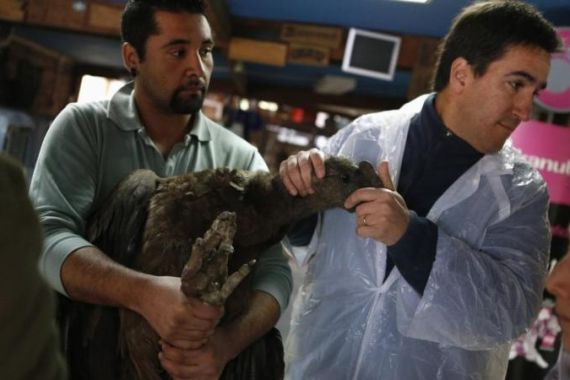Chile investigates deaths of poisoned condors
At least 20 giant Andean birds crashed into rocks near hydroelectric plant after being exposed to insecticide.

Health officials have launched an investigation to try and find out what poisoned at least 20 condors in the Andes mountain range between Chile and Argentina.
The endangered birds were found apparently poisoned with insecticide that has already killed two of the giant birds in the Chilean Andes, officials said.
Keep reading
list of 4 itemsTurtles swimming to extinction in Malaysia as male hatchlings feel heat
Could shipping containers be the answer to Ghana’s housing crisis?
Thousands protest against over-tourism in Spain’s Canary Islands
Chilean officials and volunteers have rescued 17 that were foaming from the beak and were too frail to fly. Another sick condor and two dead ones were found on Monday.
The hypothesis is that they suffered organophosphate poisoning after they were exposed to insecticides used for agriculture
They were all taken to a veterinary clinic in the city of Los Andes, some 70km east of the capital, Santiago.
Veterinarian Eric Savard has been treating them after they crashed into the rocks high in the mountains near a hydroelectric plant.
“The hypothesis is that they suffered organophosphate poisoning after they were exposed to insecticides used for agriculture,” Savard told AP news agency.
When they gain strength, the birds will be taken to Santiago’s Metropolitan Zoo for further care and then released in the same place where they were found, Pablo Vergara, regional director of Chile’s agriculture and livestock service, told local media.
Vergara said two dead foxes and a dead cow were discovered in the same area.
Officials have sent samples to a laboratory for testing. They say the vultures could have eaten poisoned meat or drunk water contaminated with insecticides.
Condors have wingspans of up to three metres and can glide on air currents for hours.
The Andean condor is one of the largest flying birds in the world. Biologists estimate only a few thousand are in the wild.